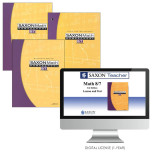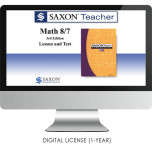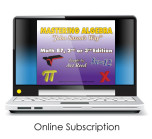We use cookies to make your experience better. To comply with the new e-Privacy directive, we need to ask for your consent to set the cookies. Learn more.
If you are looking for an approach to math that targets a small group of facts rather than practicing all facts at once; that visualizes numbers and uses strategies rather than memorizing answers; and practices strategies to increase speed rather than repeated drill, then look no more! If these modifications to the standard way of learning math facts make sense to you, you'll embrace this program and quickly see why it teaches math facts that actually stick rather than constantly reviewing flashcards. Each week has its own strategy and a similar lesson plan: cover the strategy, introduce the new teaching and game, continue to play the game then complete the practice pages. Everything you need except a few items (small counters, coins, game tokens, playing cards, and a die) are provided in the book: lesson plans, game boards, practice pages (reproducible for families), and an answer key. Addition Facts That Stick covers 1 + 1 through 9 + 9 in six weeks; 135 pgs, pb. Subtraction Facts That Stick covers 2 – 1 through 18 – 9 in eight weeks; 175 pgs, pb, Multiplication Facts That Stick covers facts 1 x 1 through 10 x 10 in ten weeks; 407 pgs, pb. Division Facts That Stick covers facts 1 ÷ 1 through 100 ÷ 10 in ten weeks; 349 pgs, pb. ~ Janice
























